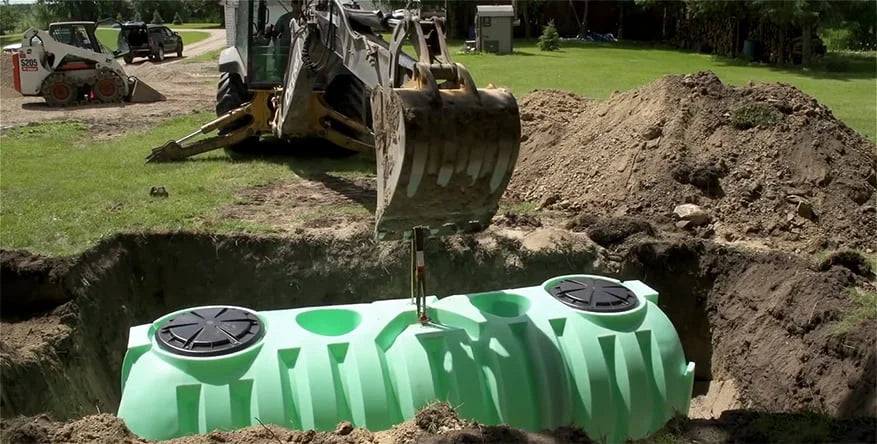Septic systems are a more cost-effective option for wastewater disposable as they do away with paying sewer bills, and are commonly installed in houses located in more rural areas where sewer systems do not reach. The type of septic system installed for your home can vary depending on your location, soil type, household size, and more. There are several different types of septic systems that remove waste and water away from the residence, and many of these systems use a septic tank.
Conventional septic systems with a trench or gravel drain field are most commonly installed in family homes. A chamber system is a kind of septic system that features a gravel-less drain field that can be made with ecologically friendly materials to reduce the environmental footprint of the septic system.
Drip distribution septic systems are able to be installed in less soil than other septic systems, but require a pump tank to push wastewater to the drip tubing. Aerobic systems work similarly to small-scale sewer systems by pushing oxygen into the septic tank, which increases bacteria in the system, thus treating waste more effectively for lots that don’t meet the best soil conditions for a septic system.
Mound systems feature sand or dirt mounds that the septic system’s trench leads to, where the system drains out. Mound septic systems are most commonly installed in areas where shallow soil or bedrock is present. Similarly, a recirculating sand filter system pumps waste from the septic tank to a pump, which then filters wastewater through a sand filter and into the ground to disperse. While sand filter systems are excellent for breaking down nutrients in wastewater, they are quite costly.
Evapotranspiration bed septic systems are different than the aforementioned septic systems in that their drain fields are a bit different. Wastewater enters the drain field and evaporates into the air, never reaching the soil or groundwater. On the other hand, a constructed wetland septic system pumps wastewater into a wetland cell that filters bad bacteria through plants and microorganisms before sending it to the drain field.
A cluster septic system collects wastewater from multiple residences and sends it to another treatment system before sending it to the drain field.
While septic tanks are costly upfront, this expense will save you a large amount of money over the years, especially when buying a product as well made as a plastic septic tank. Although maintenance is needed in some cases depending on the type of your septic system, a durable septic tank should not need replacing until it gets old, stops working properly, or has been outgrown.
Plastic Septic Tanks
Plastic septic tanks are some of the most durable types of septic tanks. With a seamless, one-piece design, homeowners can rest assured that there will be no cracks in their septic tank as time passes, in turn extending the longevity of the rest of the septic system. Coming in varying sizes, the 750 to 1500 gallon range is the typical size for septic tanks for residential waste disposal applications.
The First Time Buying a Septic Tank
As a first-time tank buyer, there are many questions to ask to determine the best model to fit the need and location for a septic tank. It is most important to establish answers to these questions in order to find the correct sized septic tank. Buying a septic tank is not something that should be done hastily without the advice of experts. You should first understand how your septic system works before choosing a tank model for your home.
Whether you’re a first-time buyer or a long-time customer, National Storage Tank, Inc can help you find the best septic tank for your needs. Our tank specialists are available to speak with you Monday through Friday, 8 am to 5 pm PST. Call or email us today for more information on the storage tanks we offer.

